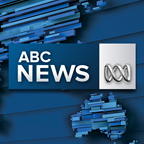
Updated
Some ads stick in our brains for decades while others are forgotten by the end of the commercial break.
From the black-and-white years of the 1960s to the indulgences of the 1980s, many of Australia's best-remembered advertising campaigns are those that broke the mould.
Whether the product was beer, tourism or even healthy living, ad men and women used creativity and flair to sell it.
Here they explain the process behind five iconic Australian ads.
'Size has nothing to do with performance'
Ad industry veteran Gawen Rudder recalls the grand entrance of Australia's great dame in the early 1970s.
At the time, Mr Rudder was working alongside Melbourne's young new advertising creative Phillip Adams — now the presenter of ABC RN's Late Night Live.
"The group of three of us from MDA [Monahan Dayman Adams], were summoned to Malleys to present a Whirlpool pitch," Mr Rudder said.
"Phillip had assured us he'd have an idea. But as we boarded the tram to our meeting, he admitted he was blank on this one.
"The advertisement on the side of the approaching tram suddenly caught his eye — which twin has the Toni?"
It was an ad that referred to the latest hair wave product.
"The new Whirlpool slogan will be a question: guess whose mum's got a Whirlpool?" Adams announced.
"And I've got just the Australian housewife for it — Barry Humphries. He owes me!"
The iconic big beer campaign
In the early 1960s, Bulimba's Gold Top beer, made by Carlton United, was in fierce competition with Queensland's biggest brand XXXX.
The rivalry led to the Bulimba being affectionately known to Brisbane drinkers as the Green Death.
It was ailing badly. A big ad was needed to save it.
Legendary creative Bruce Jarrett, from Australia's biggest agency, George Patterson's, was called in.
Bulimba's big, big beer, for a big, big thirst was born, and well-known Australian actor John Meillon was recruited to flog it.
The ad went down a treat, but the beer didn't.
"It was a dog of a beer," Mr Jarrett recalled.
"You can fool some of the people some of the time, but you can't fool all the people all the time."
So Carlton United adapted their winning advertising campaign to their new beer, Victoria Bitter.
VB went on to become the country's biggest-selling beer — and the campaign has run virtually unchanged since 1968.
'Come and say g'day'
In 1984, advertising agency MoJo introduced Paul Hogan to the United States, and Americans were introduced to the Aussie barbecue.
Hogan promised a charcoal shrimp on the barbie to those who dared come "down under".
The audacious advertisement put both Australia and Hogan on the map.
MoJo's original version had Hogan offering to "belt another banger on the barbie", before realising Americans would not have a clue what he was talking about.
The pair tried "prawn", before settling for "shrimp".
The ad now features in the Smithsonian Institution in Washington DC as an example of 20th century advertising.
A jingle for the women
In 1979, creative director of Ogilvy and Mather, Jenny Nussinov was told to do something spectacular to fix the frumpy old-fashioned image of women's fashion chain Sussans.
They wanted a change of image.
Ms Nussinov started with a store check, and according to her, it was difficult to see what could be done.
"There were different coloured clothes, and we put them in groups … then we thought, what do you say to yourself when you get up in the morning and go to the cupboard?" she said.
"That night I figured out an answer. This goes with that!
"We wrote the jingle the next day. $6 million was then spent in one burst, and it worked. The reaction was fabulous — they loved it.
"The method usually used to construct an ad was turned on its head. They said: 'Alright, we're going to manufacture so we have things that go with [each other.]'
"And that was the start of the tracksuit, I'm afraid."
Sussan's image changed overnight.
Appeasing the conscience
In the 1970s and 80s, Phillip Adams and his agency MDA were one of the first to embrace community service advertising.
Desperate for people to do more exercise, the Victorian Minister for Sport Brian Dixon approached the well-connected adman in 1975.
"I came up with the idea of a campaign that would use chirpy animation, which was funny, engaging, and likeable," Adams said.
"It would make gentle suggestions to people to do simple exercises like tossing a frisbee or taking a dog for a walk."
Adams, Alex Stitt and Peter Best got to work — and Life. Be In it. came to life.
Topics: advertising, art-history, sydney-2000
First posted









 Add Category
Add Category